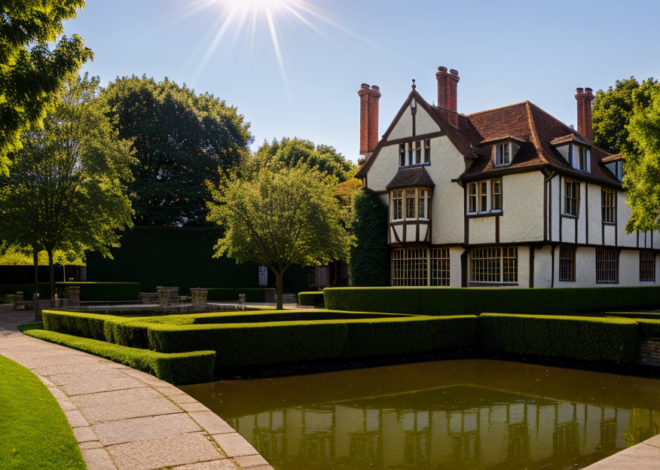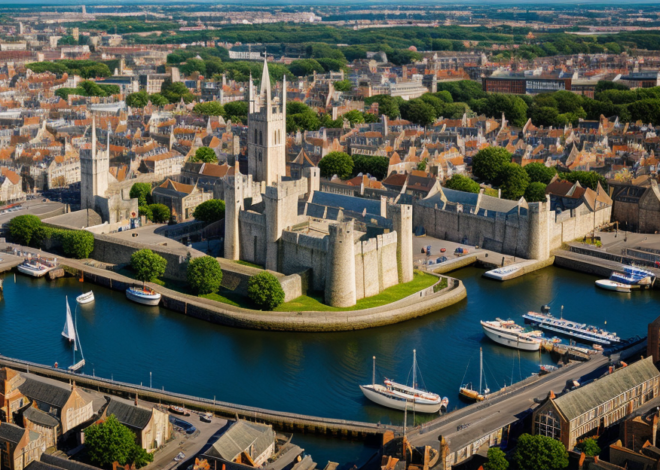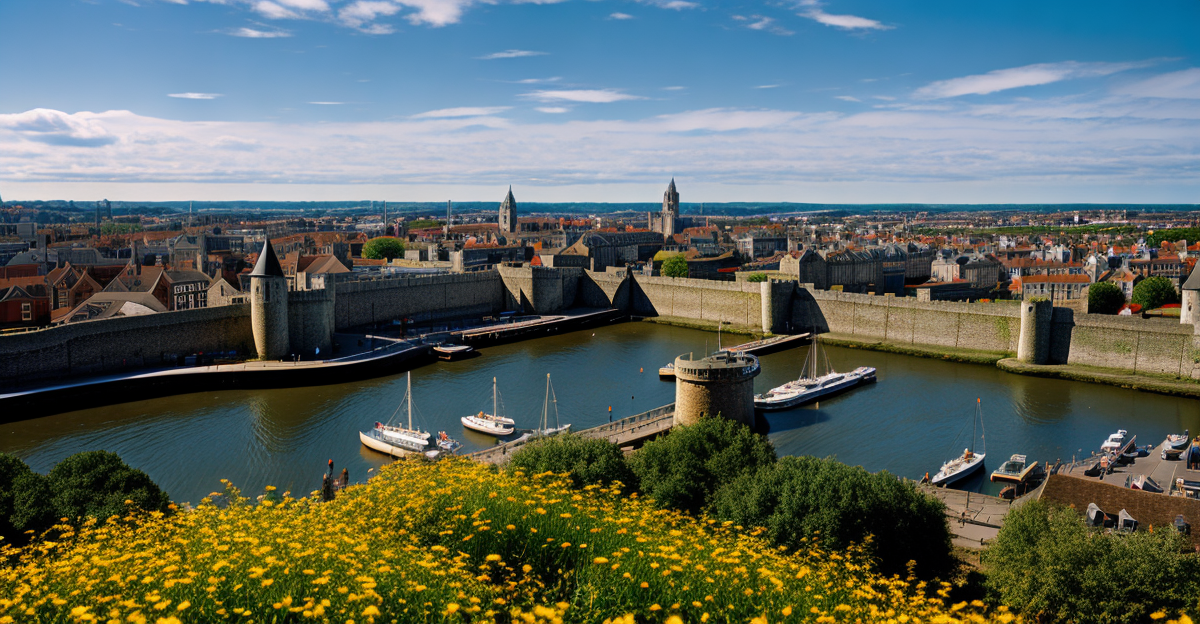
What Historic Sites Reflect Southampton’s Middle Ages?
The city of Southampton, steeped in rich historical significance, boasts a plethora of architectural gems that provide a valuable glimpse into the Middle Ages. These sites, ranging from the grandeur of the city’s medieval walls and gates, to the historic Bargate, and stretching to the Tudor House Museum, each narrate a unique story of the city’s past.
Coupled with the exploration of the Medieval Merchants House and the Gothic legacy of St. Michael’s Church, an understanding of Southampton’s medieval roots begins to take shape. Yet, the question remains; which of these sites best encapsulates the essence of Southampton during the Middle Ages?
An in-depth evaluation of these medieval landmarks could well illuminate the answer.
Southampton’s Medieval Walls and Gates
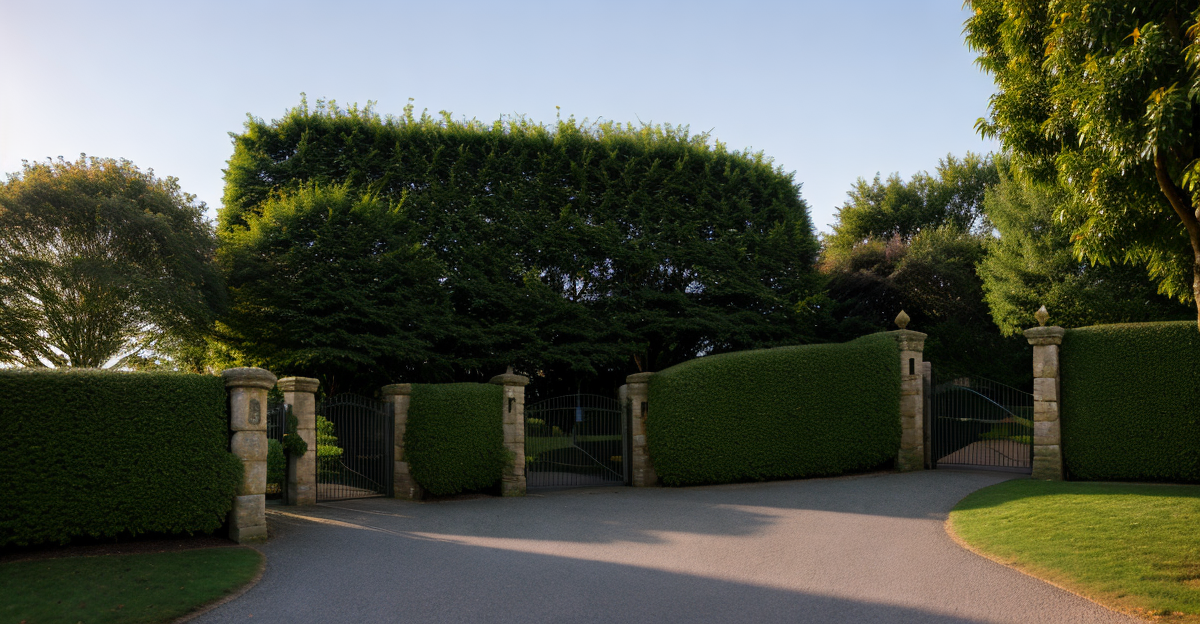
The formidable Medieval Walls and Gates of Southampton, meticulously preserved, serve as a tangible testament to the city’s rich and tumultuous history during the Middle Ages. Spanning roughly 1.25 miles, these historic edifices encircle the Old Town, their presence asserting a solemn dignity that echoes the city’s past.
The Walls Conservation effort has been instrumental in maintaining this heritage. The conservation project has focused on preventing further deterioration, reinforcing structural integrity, and preserving the authentic aesthetic value. The result is a well-preserved historic site that allows visitors an immersive journey into the Middle Ages, while also providing an important habitat for local biodiversity.
The Gates hold significant historical value, each bearing witness to different eras and events. As the primary entry and exit points, they served a dual function of defence and control, reflecting the strategic importance of Southampton during the Middle Ages. The Bargate, for instance, is a symbol of the city’s prosperity and strength, while the Westgate speaks to the city’s deep maritime connections.
The Bargate: Icon of the Middle Ages
Standing as a monumental icon of the Middle Ages, Southampton’s Bargate embodies the city’s prosperity and strength during a period marked by political upheaval and significant socio-economic transformations. The Bargate Architecture, characterized by its sturdy stone structure and fortified gatehouse, is a testament to the city’s strategic importance during the medieval era. Serving as the main gateway to the city, it reflects the defensive architecture typical of that period.
The Bargate’s Medieval Significance goes beyond its architectural appeal. It served as a symbol of power and authority, representing the city’s resilience and determination in the face of external threats. Its imposing presence in the cityscape not only highlighted the city’s wealth and status but also functioned as a deterrent to potential invaders.
Furthermore, the Bargate has stood the test of time, remaining an integral part of Southampton’s identity. Its continued survival amidst modern urban development underscores not only the durability of medieval architecture but also the enduring relevance of the city’s historic past.
Thus, Southampton’s Bargate is not merely a static monument; it is a dynamic reflection of the city’s medieval heritage and its ongoing narrative.
Tudor House Museum: a Peek Into History
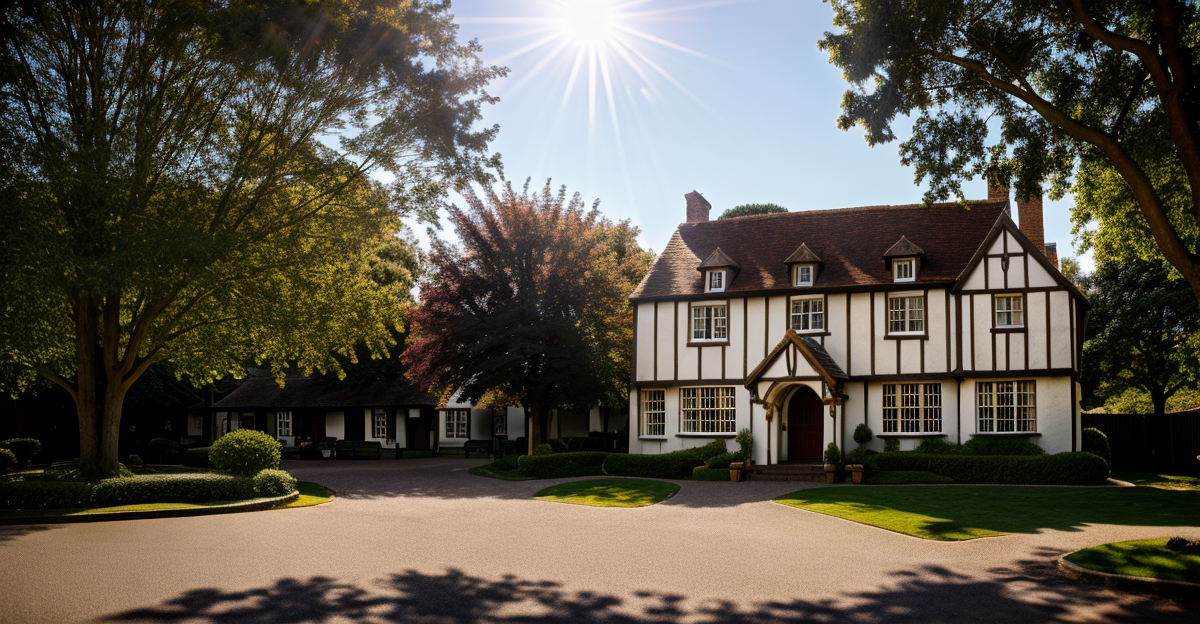
Often referred to as a historical gem, Tudor House Museum offers an intriguing window into Southampton’s rich medieval past, revealing layers of history that span over eight centuries. This prominent structure, which is one of the city’s oldest buildings, is a testament to the Tudor lifestyle and the socio-political circumstances of the Middle Ages.
The museum houses a wealth of artifacts that provide insight into the daily life, customs, and routines of the Tudor era. From the ornate tapestries and intricate woodwork to the detailed replicas of medieval weaponry, every piece is a tangible link to a bygone era. The museum’s collection includes objects of everyday use, such as pottery and cooking utensils, as well as items of personal adornment, shedding light on the aesthetic sensibilities of the time.
An analytical study of the museum artifacts reveals a society that was both sophisticated and complex, despite the harsh realities of the Middle Ages. The Tudor House Museum, thus, offers a comprehensive picture of the social fabric of medieval Southampton, making it an invaluable resource for historians and a fascinating destination for history enthusiasts.
The Medieval Merchants House
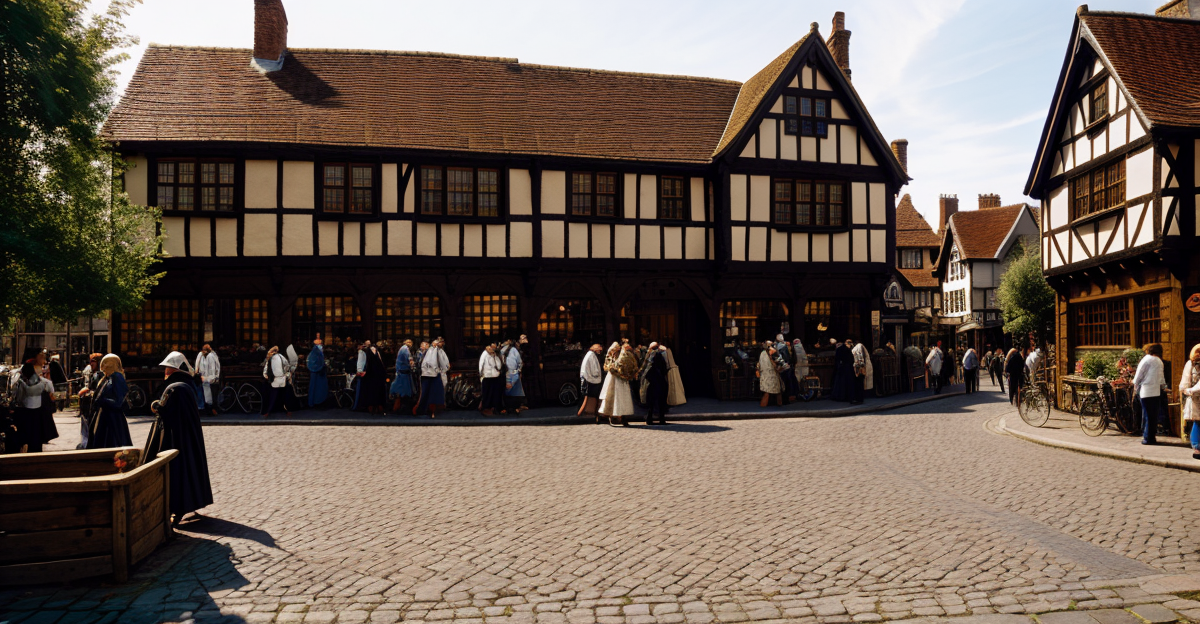
Just as the Tudor House Museum sheds light on the socio-political circumstances of the Middle Ages, another significant relic of Southampton’s medieval past is the Medieval Merchants House. Constructed in the late 13th century, it offers an authentic insight into the domestic life of a prosperous merchant during this period.
Characterised by its Medieval architecture, the house is a fine representation of the period’s vernacular buildings. Its timber-framed structure, gabled roof, and cantilevered jetty illustrate the architectural norms of the era. The house has undergone meticulous Merchant House restoration to preserve its authenticity, enhancing the visitor experience.
The house’s interior reflects the merchant’s lifestyle. The ground floor, which served as a shop, showcases the merchant’s trade, while the upper levels were the living quarters. Here, one can find an array of medieval furniture, household objects, and decorative items, providing a vivid image of medieval domestic life.
The Medieval Merchants House, in its architectural style and intricate restoration, brings to life the social and economic dynamics of Southampton in the Middle Ages. The house is not just an architectural relic but an emblem of the city’s rich history.
St. Michael’s Church: A Gothic Legacy
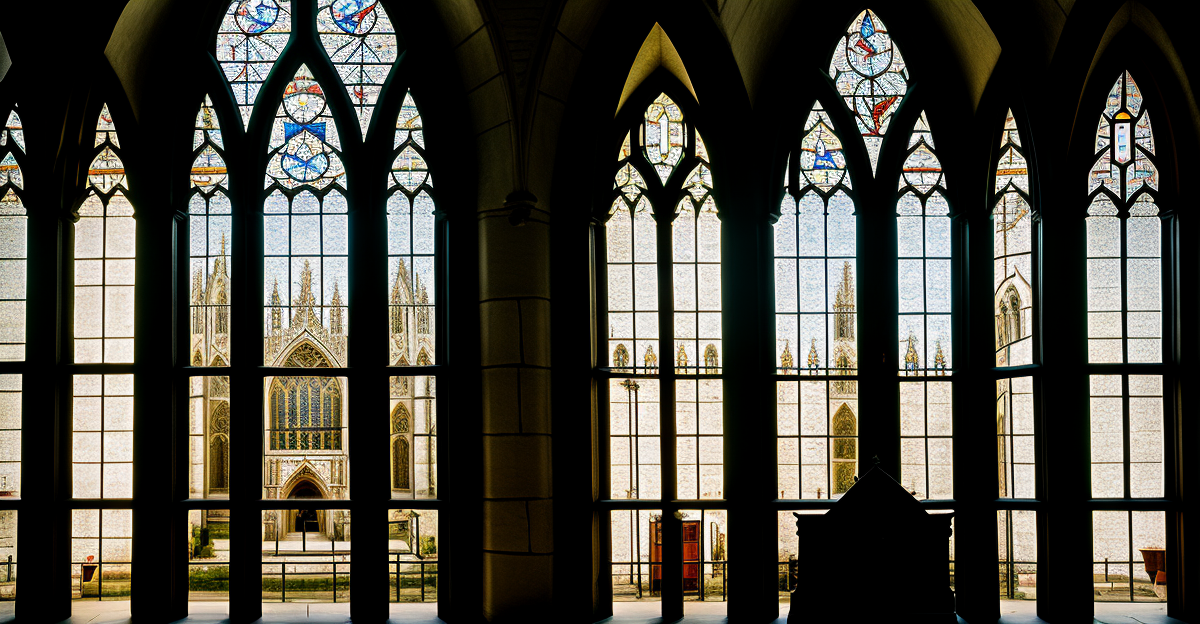
In the heart of old Southampton stands St. Michael’s Church, an enduring testament to the city’s Gothic architectural legacy from the Middle Ages. This imposing edifice, with its robust stone structure adorned with pointed arches and ribbed vaults, is a classic example of Gothic architecture. The church’s intricate facade and the soaring spire, which pierces the city’s skyline, are quintessential Gothic elements, reflecting a time when spirituality and grandeur were intertwined.
St. Michael’s Church has withstood the ravages of time, courtesy of meticulous church conservation efforts. The preservation of its architectural integrity, despite the challenges of urbanization and modernization, is a tribute to these endeavors. The maintenance of the church’s original design elements, such as the stained glass windows and the wooden rood screen, underscores the importance of conservation in maintaining the city’s historical continuity.
The significance of St. Michael’s Church extends beyond its architectural merits. It serves as a living monument of Southampton’s medieval history, narrating tales of a bygone era through its stoic presence. Its preservation is key to retaining the city’s historical identity, making church conservation a priority for future generations.
The Gothic legacy of Southampton resonates through St. Michael’s Church, making it an integral part of the city’s historic landscape.

